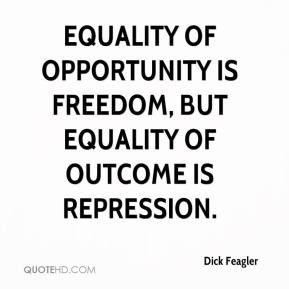Bias
The Sexism in Science Controversies
Are scientific claims of sexism in science overstated?
Posted July 2, 2015
NOTE: THIS IS A GUEST POST by Claire Lehmann, a psychology graduate student in Australia. I have invited this post as part of an effort to give greater voice to women who are willing to voice scientifically-informed perspectives that contest the common "narratives of oppression and victimization" that pervade the social sciences. Neither she, nor I, am in the business of denying the existence and ongoing importance of discrimination, prejudice, and bias. However, recognizing that such problems still exist does not justify scientists making manifestly false or unjustified claims.
It is in this spirit that I invited her guest post. The rest of this post is Claire's (except for the inserted graphics, which were my doing). Lee
“Academic Science isn’t Sexist” declared Wendy Williams’ and Stephen Ceci’s op-ed in The New York Times last October. Their piece summarised a 67 page review published in Psychological Science in the Public Interest called “Women in Academic Science: A Changing Landscape”[1]. Working alongside two economists, they compiled data from several hundred analyses of women’s participation in sciences - from the life sciences such as psychology - to the more math-intensive disciplines such as engineering and physics.
The biggest barrier for women, they found, was that they saw academic jobs, particularly in the life sciences, as being “incompatible with family formation”.
But overall, they found that the picture painted was one of “gender fairness, rather than gender bias”. Women across the sciences were more likely to receive hiring offers than men, their grants and articles were accepted at the same rate, they were cited at the same rate, and they were tenured and promoted at the same rate[2].
***

Just two weeks after Williams’ and Ceci’s op-ed was published, the online fracas ‘shirtstorm’ happened. The lead scientist of the Rosetta Mission, Dr. Matt Taylor, was ridiculed online for wearing a celebratory shirt with pictures of scantily clad cartoon women. After tens of thousands of tweets were generated by the subject, Dr. Taylor broke down on tears in a television interview and apologised. After his tearful appearance many high profile figures came to his defence including Richard Dawkins and the Mayor of London, Boris Johnson. Even the prominent UK feminist Julie Bindel wrote a concerned op-ed in The Guardian warning that “feminism is in danger of becoming toxic”.
Yet the tweets which sparked the online vilification of Dr. Taylor did not originate from professional agitators. They originated from a segment of the online science community. And this community is now publicly smearing the work of Williams and Ceci. Science blogger Emily Willingham reacted to their paper with incredulity, “how could anyone with any actual experience in academic science say something like that with a straight face?” PZ Myers took to his blog to liken male academics to ISIS, and female academics to refugees fleeing Iraq. Several commentators described their work as “victim-blaming,” trying to impart moral value to empirical data. And Rebecca Schuman, education editor of Slate declared that “work like [Williams’ and Ceci’s] will do little more than help to ensure that institutional bias in the academy endures for years to come.” [emphasis mine]
***
What exactly is going on here? To the general public, Williams and Ceci’s data simply confirms the obvious. Young women upon graduation are able to find permanent employment, and if or when they decide to have families, they tend to take maternity leave and arrange part-time hours on return. It’s not rocket science. Negotiating a biological clock at the same time as a tenure clock is simply not an appealing option for many intelligent women.
Yet while many female grad students opt-out of the academic career track early on, (especially within the life sciences) evidence suggests that once women are in the pipeline, they are likely to persist[3]. And in a paper from Williams and Ceci recently published in the Proceedings of the National Academy of Sciences (PNAS), it was found that in controlled experiments, tenured academics had a shocking 2:1 bias for preferring hypothetical female job applicants over identically qualified mail applicants[4].
Williams and Ceci are far from the first scholars to be wary of narratives of oppression when it comes to women in science. Fifteen years ago Science published a paper in which Linda Gottfredson and Judith Kleinfeld questioned the ethics of trying to achieve parity through social engineering[5]. And in 2002 The Blank Slate was published. In it, Steven Pinker wrote:

Certainly there are institutional barriers to the advancement of women. People are mammals, and we should think through the ethical implications of the fact that it is women who bear, nurse, and disproportionately raise children. One ought not to assume that the default human being is a man and that children are an indulgence or an accident that strikes a deviant subset. Sex differences can therefore be used to justify, rather than endanger, women-friendly policies such as parental leave, subsidized childcare, flexible hours, and stoppages of the tenure clock or the elimination of tenure altogether.[6] (p358).
Some eleven years after the publication of Pinker’s seminal text, the scholars Mary Ann Mason, Nicholas Wolfinger and Marc Goulden asked if family formation mattered in the Ivory Tower. Their book was called Do Babies Matter? And they answered their question with a resounding “yes”[7]. Their research found that, in general, women who were successful in the academy delayed having children and had fewer children than they had hoped for[8]. And a significant proportion of women who had hoped to form families at some point forewent parenthood altogether[9]. Among graduate students that Mary Ann Mason has surveyed, more than half of men and more than two thirds of women view academic careers as being in conflict with family life[10]. When female graduates were asked why they didn’t continue on with academic careers after PhD completion, the most commonly reported reasons were having “other life interests” and “wanting to focus on children” [11].
Williams’ and Ceci’s analysis posits that early socialization - combined with the biological and emotional realities of motherhood - probably play a larger role in constraining women’s career trajectories than sexism. Yet their hypotheses are just that – hypotheses. It is plausible that social engineering will not produce anymore female physicists and computer scientists than what we already have. Why is it plausible? Evidence regarding occupational preferences has found very large sex differences. While women in the aggregate tend to prefer social and creative work, men tend to prefer theoretical or mechanical work[12]. (This does not mean that women or men are any less capable in these areas, but simply that they are less interested in them).
These sex differences become more robust the more people are surveyed. In a meta-analysis of over half a million people, the effect size of what is described as the “People–Things” dimension (where women prefer working with people and men with things) was found to be very large (d = 0.93)[13]. Even within professional fields, the “People–Things” gender split can be found. In medicine, more women go into general practice and pediatrics and listen more empathically to patients[14] while men are more predominant in surgery. Even in social psychology, men tend to gravitate to groups on theoretical topics such as scientific integrity. These sex differences don’t vanish when policies for gender equity are implemented, either. In fact, the evolutionary psychologist David Schmitt has marshaled cross cultural data across 21 sources which finds that sex differences on a range of variables are larger in nations with greater social and political gender equality[15]. For example there are more women graduating from computer science in Iran than in Norway or Sweden[16]. This is despite the greater gender egalitarian norms and policies of Nordic countries.
Fifteen years ago Gottfredson said that “if you insist on using gender parity as your measure of social justice, it means you will have to keep many men and women out of the work they like best and push them into work they don’t like”[17]. And Kleinfeld, declared:
We should not be sending [gifted] women the messages that they are less worthy human beings, less valuable to our civilization, lazy or low in status, if they choose to be teachers rather than mathematicians, journalists rather than physicists, lawyers rather than engineers[18].
Fifteen years later, perhaps it's time we listened.
Claire Lehmann is a graduate student in forensic psychology at UNSW. You can read her blog @ clairelehmann.wordpress.com.
[1] Ceci, S. J., Ginther, D. K., Kahn, S., & Williams, W. M. (2014). Women in Academic Science A Changing Landscape. Psychological Science in the Public Interest, 15(3), 75-141.
[2] Ibid.
[3] Miller, D. I., & Wai, J. (2015). The Bachelor’s to PhD STEM Pipeline No Longer Leaks More Women Than Men: A 30-Year Analysis. Name: Frontiers in Psychology, 6, 37.
[4] Williams, W. M., & Ceci, S. J. (2015). National hiring experiments reveal 2: 1 faculty preference for women on STEM tenure track. Proceedings of the National Academy of Sciences, 201418878.
[5] Holden, C. (2000). Parity as a goal sparks bitter battle. Science, 289(5478), 380-380.
[6] Pinker, S. (2003). The blank slate: The modern denial of human nature. Penguin.
[7] Mason, M. A., Wolfinger, N., & Goulden, M. (2013). Do Babies Matter?.
[8] Mason, M. A., Wolfinger, N., & Goulden, M. (2013). Do Babies Matter?.
[9] Ibid.
[10] Mason, M. A., Goulden, M., & Frasch, K. (2009). Why graduate students reject the fast track. Academe, 95(1), 11-16.
[11] Ibid.
[12] Su, R., Rounds, J., & Armstrong, P. I. (2009). Men and things, women and people: a meta-analysis of sex differences in interests. Psychological bulletin, 135(6), 859.
[13] Ibid.
[14] Hojat, M., Gonnella, J. S., Nasca, T. J., Mangione, S., Vergare, M., & Magee, M. (2014). Physician empathy: definition, components, measurement, and relationship to gender and specialty.
[15] Schmitt, D. P. (2015). The Evolution of Culturally-Variable Sex Differences: Men and Women Are Not Always Different, but When They Are… It Appears Not to Result from Patriarchy or Sex Role Socialization. In The Evolution of Sexuality (pp. 221-256). Springer International Publishing.
[16] Galpin, V. (2002). Women in computing around the world. ACM SIGCSE Bulletin, 34(2), 94-100.
[17] Holden, C. (2000). Parity as a goal sparks bitter battle. Science, 289(5478), 380-380.
[18] Ibid.




